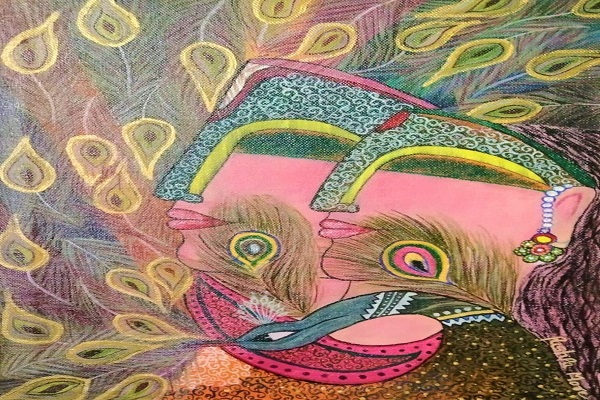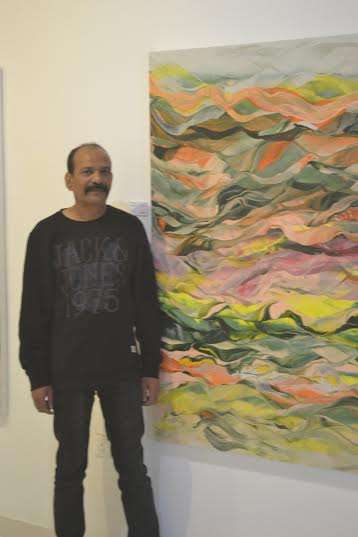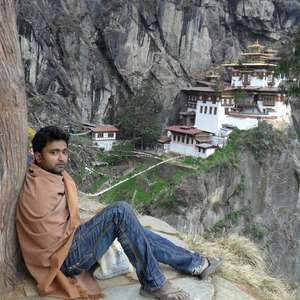
The traditional art market has long been exclusive and limited by physical barriers, such as galleries and art fairs. Online platforms have revolutionized the art world by breaking down these limitations and providing greater accessibility and diversity in modern art.
Online platforms have democratized the art market by allowing artists, collectors, and enthusiasts to connect virtually. Artists can showcase their work globally, gaining exposure and recognition without relying on physical galleries or intermediaries. They can also interact directly with potential buyers, fostering a sense of community and receiving feedback from a diverse range of individuals.
For art lovers, online platforms offer unprecedented access to a wide variety of artwork. They can explore different genres, styles, and cultures, discovering new artists and art movements. Online platforms provide detailed information about the artworks, including artist biographies and descriptions, enhancing the overall understanding and appreciation of the art.
By eliminating geographic barriers, online platforms promote inclusivity and diversity in the art world. Artists from underrepresented communities can gain visibility and recognition, while art lovers can engage with a broader range of voices and perspectives. The art market is becoming more interconnected, allowing for the exploration of a global art scene.
With the incessant growth and advancements in online platforms, the art world is undergoing a metamorphosis. It is becoming more accessible to a broader audience, fostering creativity, and nurturing appreciation for modern art paintings. The revolution engendered by online platforms has opened up new opportunities for artists and art aficionados alike, creating a more vibrant and inclusive art ecosystem.
The Rise of Online Platforms
The ascent of online platforms for procuring and vending art has had a momentous impact on the art world, with their growth and popularity skyrocketing in recent years. These platforms have become a favored conduit for artists, collectors, and art enthusiasts to engage with the art market due to their convenience, accessibility, and global reach.
Prominent examples of online art marketplaces and galleries include Artsy, Saatchi Art, 1stdibs, and Etsy. Artsy functions as an online marketplace and discovery platform, connecting collectors with galleries and artists. Saatchi Art focuses on connecting artists directly with buyers, while 1stdibs and Etsy cater to a broader range of art and design objects.
Online platforms have expanded the reach of modern art beyond traditional museum walls. Artists can showcase their work to a global audience by uploading high-resolution images, accompanied by detailed descriptions and artist statements. These platforms often offer features like zooming capabilities and virtual tours, enhancing the viewing experience for art enthusiasts.
By embracing online platforms, artists can connect directly with a global audience, attracting collectors and enthusiasts from diverse backgrounds.
Online platforms have engendered a paradigm shift in the art world by furnishing a commodious, approachable, and globally interconnected space for procuring and vending art. They have transcended the confines of conventional museum walls, forging links between artists and collectors from disparate corners of the world. With their technological prowess and inventive features, online platforms have metamorphosed the art market, cultivating creativity, inclusivity, and the admiration of modern art.
To recapitulate, online platforms have enabled artists to partake in international art fairs and exhibitions virtually, augmenting their visibility and recognition. Artists can now exhibit their work to a universal audience without the requirement for physical presence or travel.
Accessibility of Modern Art
The advent of online platforms has significantly augmented the accessibility of modern art, reaching a global audience and obliterating barriers that once circumscribed its reach. These platforms have expanded the audience for modern art by allowing individuals from around the world to explore and engage with artwork without the constraints of geographical limitations. Online art galleries and marketplaces provide a virtual space where artists can showcase their work, facilitating cross-cultural exchange and understanding.
Financial barriers have also been addressed through online platforms, as they offer a range of price points that cater to different budgets. This makes art more accessible to a wider range of individuals who may have been excluded from the traditional art market due to cost considerations. Furthermore, online platforms have played a pivotal role in obliterating cultural barriers by showcasing diverse modern art from various regions and backgrounds. This fosters inclusivity and encourages the appreciation of different artistic perspectives.
For artists, online platforms offer numerous benefits. They provide a global stage for artists to showcase their work, increasing their exposure and allowing for career advancement. Artists can also generate income by directly selling their artwork to collectors and buyers through these platforms. The direct interaction with the market empowers artists and gives them more control over their artistic careers.
Overall, online platforms have revolutionized the accessibility of modern art. Providing a space where artists and art enthusiasts can connect from around the world. By overcoming geographical, financial, and cultural limitations. These platforms have opened up new opportunities for artists and made modern art more inclusive and accessible to a global audience.
Diverse Range of Modern Art
Online platforms have significantly encouraged experimentation and diversity in modern art by allowing artists to break away from traditional conventions. These platforms provide artists with the freedom to explore innovative techniques, styles, and concepts, pushing the boundaries of artistic expression. The inclusive nature of online platforms has also given emerging artists and underrepresented voices a platform to showcase their work and gain recognition. Artists from marginalized communities now have equal opportunities to share their unique experiences and narratives. Leading to a greater diversity of artistic voices in the art world.
Moreover, online platforms offer art enthusiasts the chance to explore a wide range of art styles, mediums, and themes. They showcase artwork from around the world, allowing users to discover new art movements, cultural influences, and artistic trends. By featuring curated collections and thematic exhibitions. Online platforms facilitate a deeper engagement with different aspects of modern art. Encouraging individuals to venture beyond their comfort zones.
Overall, online platforms have revolutionized the art world by promoting experimentation, diversity, and inclusivity. They have created a space where artists can freely express their visions and where art enthusiasts can explore the rich variety of modern art available globally.
Impact on the Art Market
Online platforms have brought significant changes to the art market, disrupting traditional practices and empowering artists and collectors. These platforms have challenged the role of traditional gatekeepers by providing artists direct access to buyers and allowing them to take control of their own careers. The concept of exclusivity has been redefined. As online platforms offer unlimited virtual space for a diverse range of artists and artworks to be showcased, democratizing the art market.
Direct interaction and networking are facilitated through online platforms, enabling artists to engage directly with potential buyers and build relationships. This empowers artists to retain control over their artistic careers and financial transactions. For collectors, these platforms provide convenience and access to a wide range of artworks from around the world. Fostering networking opportunities with other art enthusiasts and professionals.
However, challenges and criticisms persist. Concerns about the authenticity, provenance, and quality of artworks in online transactions need to be addressed. Verification processes, certifications, and guarantees implemented by reputable platforms help alleviate these concerns. Debates also surround the potential impact of online platforms on the exclusivity of the art market and the potential commodification of art. Striking a balance between commercial viability and artistic authenticity is important to maintain the integrity of the art market.
In conclusion, online platforms have disrupted the traditional art market. By empowering artists, expanding access for collectors, and fostering direct interaction and collaboration. While challenges remain, addressing concerns about authenticity and maintaining a balance between commercial success and artistic integrity will further enhance the transformative impact of online platforms on the art market.
Final Remarks
In conclusion, online platforms have had a transformative impact on the art market by increasing accessibility and diversity in the modern art world. These platforms have overcome barriers of geography, finance, and culture, allowing a global audience to engage with art. Artists are no longer confined to traditional channels and can directly showcase their work. Leading to a more inclusive representation of artistic voices. Online platforms have encouraged experimentation, challenging conventional norms and fostering a diverse range of artistic expressions.
Looking ahead, the future of online art marketplaces is promising as technology continues to advance. These platforms are likely to become even more immersive and interactive, offering enhanced experiences for artists and art enthusiasts. However, challenges persist, particularly regarding the verification of authenticity and quality in online art transactions. It is crucial for online platforms to address these concerns and maintain a balance between commercial viability and artistic integrity.
Online platforms have precipitated a radical transformation in the art market by endowing artists. amplifying the audience for art, and proffering opportunities for underrepresented voices. The growth and inclusivity of the art market will persist to evolve as online platforms adapt and innovate. With the potential for further advancements, online platforms hold the promise of an exhilarating future. Connecting artists and art aficionados worldwide and shaping the art market in a more accessible, diverse, and inclusive way.





















